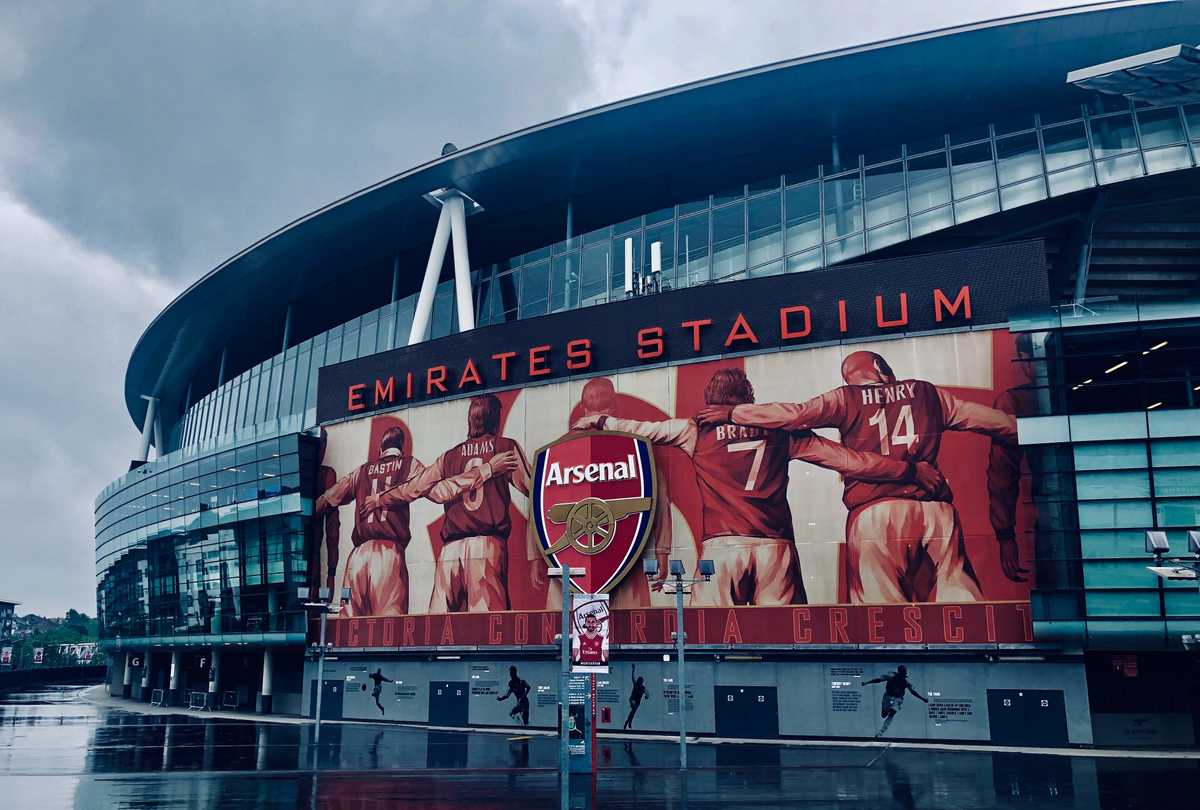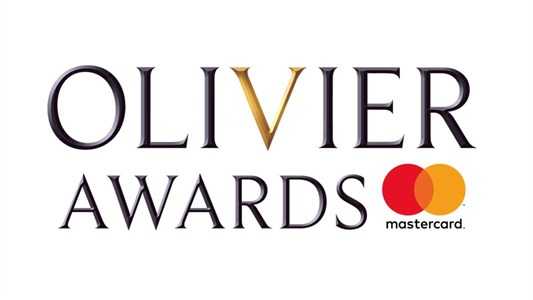Your complete guide to sponsorship marketing
- Publication date
- Author
- Imogen Beech
- Reading time
- 14 minute read
A whopping $0.9 billion is projected to be spent on sponsorship globally by the end of 2023 (according to Statista). And by 2027, the market volume is estimated to reach an even huger $1.2 billion!
But despite this sizable market, we’d argue that sponsorship is a partner marketing strategy that’s still underestimated and underutilised. In fact, whether you’re a not-for-profit, a huge global corporation or a small family-run business, there’s sure to be a sponsorship opportunity that’s perfect for your brand.
Here, we’ll explore the different types of sponsorship marketing, why sponsorship can be so powerful, and how to create a fool-proof sponsorship marketing strategy. But first…
Sponsorship involves one brand (the sponsor) aligning itself with an aspect of another brand (the sponsee). This is often an event such as a sports game or conference, but can also include TV programs, charities and even celebrities.
The Cambridge Dictionary definition of sponsorship in marketing states that sponsorship is:
‘the act of providing money for a television or radio programme, website, sports event, or other activity in exchange for advertising.’
However, contrary to popular belief, sponsorship marketing doesn’t always involve money changing hands. Although the sponsor will often offer support in the form of finance, they can also offer support in the form of other resources – whether that’s donating products, promoting the sponsee’s activity or even broadcasting it on television. In return, the sponsee helps to boost the sponsor’s brand awareness and reputation.
As we’ve already touched upon, sponsorships can come in many different forms. Here are the main ones that you’re likely to come across.
Also known as cash sponsorship, the sponsor gives the sponsee financial support. Big brands such as McDonald’s, Pepsi and Coca-Cola invest billions of pounds in sponsorship every year.
Rather than giving the sponsee cash, the sponsor donates products or services. This could be anything from catering to printing.
This is essentially a form of in-kind sponsorship. Media sponsors promote the sponsee’s activity, perhaps by posting about it on social media, by publishing blog posts or even by broadcasting it on television in the case of large events and sports fixtures.
Similar to media sponsors, promotional partners are generally individuals who can help to promote the sponsee’s activity – such as bloggers or influencers. They often agree to sponsor events in return for speaking slots.
Sponsorship opportunities can be in very high demand, particularly for high-profile events and sports. But any kind of business can become a sponsor, whether they’re a small, one-person band or a household name.
For example, a small, family-run business could get its logo printed on the uniform of a local amateur sports club. A larger nationwide brand could get a short feature ahead of their chosen TV program. Or a giant like Coca-Cola could run campaigns in conjunction with the Olympic Games, such as the brand’s famous #thatsgold campaign during Rio 2016.
The opportunities are endless!
Our partner intelligence and discovery engine can help you uncover thousands of partnership opportunities for sponsorship and more.
Here are a few common kinds of sponsorship marketing you should be aware of.
Sports sponsorship is when a brand decides to align itself with a certain sport, usually in an attempt to increase brand awareness.
Think about it: you’d be hard-pressed to watch a sports game without coming across the logos of at least half a dozen or so brands – on board advertisements, on team kits, on TV breaks when games are televised… the list goes on!
Some of the most popular kinds of sports sponsorship include:
Some of these sponsorship types, such as shirt or athlete sponsorship, share a large overlap with product placement – particularly when games are televised. Read more in our guide to product placement.
If we’re talking about large, high-profile events, venues or teams, there can often be multiple sponsors who receive different levels of exposure depending on who bids the highest. Different kinds of sponsors include:

Think of any event. Whether it’s a charity ball, a stage show, a conference or an awards ceremony, we bet there are sponsorship opportunities available. In fact, Bizzabo reveals that 33% of mid-to-senior-level marketers allocate at least 21% of their marketing budget towards sponsoring or exhibiting at events
To take a couple of high-profile examples, Mastercard famously sponsors the Olivier Awards every year. And PepsiCo religiously sponsors the NFL Super Bowl, sinking $100 million into it in 2020 alone (according to NS Business)
On that note, it’s worth mentioning that PepsiCo was actually ranked top US sponsor by spend in 2015 by IEG, after spending a grand total of $370 million on sponsorship marketing in just that year! Check out our list of 104 strategic partnership stats for more mind-blowing facts about sponsorship
Sponsors can offer events value in lots of ways besides just financial support, from free audiovisual services to printing marketing materials or providing food and drinks. But of course, the sponsor also has to receive value in return.
Some common forms of exposure for event sponsors include:

TV sponsorship is an effective way for brands to get their names in front of a larger audience. Chances are you’ve heard the words ‘sponsored by…’ before many of your favourite TV programmes
If we look at Channel 4 alone, you’ll find Crosta & Mollica sponsoring food, MoneySuperMarket sponsoring films and Hillarys sponsoring homes. And that’s just the tip of the iceberg
Depending on the channel, brands could choose to align themselves with
More and more, brands are moving beyond simply aligning themselves with one-off programmes. Instead, they might partner with broadcasters more closely to get exposure on-air, in marketing surrounding the programme, in branded promo trails, on the programme website, in a competition led by the broadcaster and much more
These kinds of sponsorship opportunities can be combined with other similar types of strategic partnerships, such as product placement
Of course, TV isn’t the only kind of broadcasting that offers sponsorship opportunities – brands can also team up with radio stations, podcasts or even YouTube channels to offer and benefit from sponsorship. In this way, opportunities aren’t limited to those big national or international brands. By partnering with local radio stations or niche podcast creators, smaller brands can also utilise sponsorship to great effect
To see a selection of brands that have nailed sponsorship, check out our top sponsorship marketing examples.

As far as we’re concerned, sponsorship is a type of partnership. After all, it involves two brands collaborating to bring benefit to them both
However, it’s certainly not always the most collaborative type of partnership there is – especially when we’re talking about cash sponsorship, which can be transactional. Often, the sponsee will sell promotional spots to sponsors for a set fee, which is really no different from a traditional advertising deal
And just look at the ‘sponsored content’ that you can find on many publishers’ websites. There’s usually not much to differentiate these from traditional advertorials (check out our guide to content partnerships for more)
That said, let’s not forget the scope that sponsorship marketing has – especially when it comes to in-kind and media sponsorship, where no money actually changes hands. Instead, the sponsor and the sponsee have to focus on using their individual skills and talents to benefit one another. If that’s not a strategic partnership, then we don’t know what is!
Just like with any kind of partnership, sponsorship marketing brings some key benefits to each of the partner brands (when it’s done well!).
True, sponsorship’s not all sunshine and roses. If brands aren’t in it for the right reasons, there can be a number of pain points.
If you’re keen to join the world of sponsorship marketing to give your brand’s name a boost, you’re probably wondering where to start. We’d always recommend creating a sponsorship marketing strategy, so that you can clarify the approach you intend to take and start off your sponsorship journey as successfully as possible! Here’s how to nail it.
First things first, you’ll need to consider what it is that you want to get out of a sponsorship marketing collaboration.
For instance, are you hoping to raise brand awareness amongst a specific subset of your target audience? Are you hoping to increase brand reputation amongst a set demographic who may have lost trust in your brand for whatever reason
Once you’ve clarified exactly what you would like to gain from a partnership, you’ll be much better placed to make one happen that’s going to have a positive impact on your brand.
Next, brainstorm what kind of sponsorship opportunities could help you reach your goals
For instance, if your brand is B2B, perhaps sponsoring an industry conference would help you to get the word out to your audience. Or, if you are looking to gain back trust amongst Gen Z consumers, a partnership with a charity they care about could work wonders. After all, 75% of Gen Z want companies to take a stand on issues they’re passionate about (according to Accenture).
Now that you know what kind of opportunities would work for your brand, it’s time to start thinking about who you could actually partner with! Consider
And of course, remember to look for partners that will have potential sponsorship opportunities you could get involved with. Do they host events, for instance? Or run a radio show? You’ll need potential partners who will give you the opportunity to put your brand name or product in front of their audience in an impactful way.
Breezy can help you quickly uncover thousands of relevant partner opportunities.
Once you’ve drawn up a list of prospects, it’s time to put together a loose proposal for how you think you could work together in a sponsorship marketing capacity.
You’ll need to consider what you can bring to the table – this is likely to vary depending on what kind of endeavor you’re looking to sponsor. For instance, for an event, you might:
You’ll also need to consider what you would like in return. For example:
Just remember that this is a partnership, so try not to get too married to your proposal. In particular, remember that potential partners may have their own ideas about what they can do for your brand in exchange for your support – so, it can be best to simply tell them your end goal (eg. increase brand awareness) and let them propose ideas for how they can help you get there.
As part of your sponsorship strategy, you’ll need to create an effective outreach strategy to help you turn your prospects into fully-fledged partners.
Consider how many prospects to contact, what outreach channels you’d like to use (eg. email, LinkedIn, phone) and how you plan to uncover the correct contact details. Most brands that conduct successful outreach spend hours digging out relevant contact names and email addresses manually in-house, but you can save a ton of time by requesting a lead’s contact details on Breezy.
Perhaps most importantly, you’ll need to think about what you plan to say in your initial outreach to make you stand out and elicit a positive response. A few outreach ideas to give you the best chance of success include:
We can dig out your prospects' contact details for you, making sure it's all fully up-to-date and accurate.
Last but not least, make sure to measure your efforts! By which we mean you should both measure the success of any sponsorship marketing partnerships you embark on, as well as your outreach efforts.
Why? Well, if you don’t keep track of how things have gone, how are you going to do even better next time around?
When you’re measuring your outreach, you should keep track of your email delivery rate, response rate, how many follow-up emails you send on average before getting a response, and how many prospects convert into partners. You should also see if you can spot a pattern in terms of the kinds of prospects who you tend to get positive responses from, as this may help you to focus your efforts more keenly in the future.
Once you’ve embarked on a sponsorship marketing partnership, you’ll then need to measure this too. Unfortunately, this can be a little more tricky. After all, it’s notoriously difficult to measure things like brand awareness and reputation!
That said, it’s worth tracking how many people would have seen your brand being promoted as part of the sponsorship opportunity, uptake of initiatives such as free goodie bags you might hand out, and whether you can spot an uptick in things like website visits and sales in the days and weeks after the endeavor. By putting key partnership KPIs in place at the point where the partnership is negotiated, you’ll be best placed to measure how close you’ve come to reaching your goals.
We’ve all seen huge sponsorship examples ranging from the Olympic Games to the Cannes Film Festival; the BAFTA awards to the Super Bowl. But these events that have a worldwide spotlight are going to be out of reach for most of us. So, what are the best sponsorship ideas for startups and SMBs?
Here are some of our favourite ideas for sponsorship.
At the end of the day, there’s no denying that sponsorship marketing is a lot harder to measure than other partnership types, and isn’t the best-suited to getting across targeted sales messages. But if you’re in it for the right reasons, it’s a powerful tool for getting in front of new audiences, increasing brand awareness and providing a boost to brand reputation.
If you’re looking for sponsorship opportunities, or any other kind of partnership, remember to book a demo with Breezy to see how our partner search engine can make your life so much easier. All you have to do is give us some info to guide our search – like your competitors and keywords – and then we’ll do the hard work of finding you partner prospects, so you don’t have to!
Book a demo to see how we can help you uncover thousands of partnership opportunities for sponsorship and more.
Imogen is a copywriter and content writer with over two years’ experience writing about the exciting world of strategic partnerships, as well as running her own business. She loves learning about new topics as she writes, and has enjoyed penning articles on industries ranging from mortgages to events, theatre to home improvements and everything in between.
View more by Imogen Beech